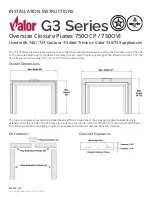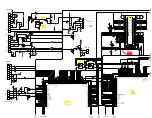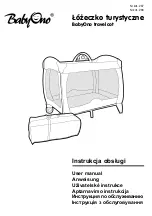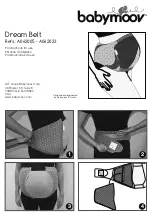FXTH870xD
Sensors
Freescale Semiconductor, Inc.
33
5.5
Interrupts
Interrupts provide a way to save the current CPU status and registers, execute an interrupt service routine (ISR), and then restore
the CPU status so processing resumes where it left off before the interrupt. Other than the software interrupt (SWI), which is a
program instruction, interrupts are caused by hardware events. The debug module can also generate an SWI under certain
circumstances.
If an event occurs in an enabled interrupt source, an associated read-only status flag will become set. The CPU will not respond
until and unless the local interrupt enable is a logic 1 to enable the interrupt. The I bit in the CCR must be a logic 0 to allow
interrupts. The global interrupt mask (I bit) in the CCR is initially set after reset which masks (prevents) all maskable interrupt
sources. The user program initializes the stack pointer and performs other system setup before clearing the I bit to allow the CPU
to respond to interrupts. When the CPU receives a qualified interrupt request, it completes the current instruction before
responding to the interrupt. The interrupt sequence follows the same cycle-by-cycle sequence as the SWI instruction and consists
of:
•
Saving the CPU registers on the stack
•
Setting the I bit in the CCR to mask further interrupts
•
Fetching the interrupt vector for the highest-priority interrupt that is currently pending
•
Filling the instruction queue with the first three bytes of program information starting from the address fetched from the
interrupt vector locations
While the CPU is responding to the interrupt, the I bit is automatically set to avoid the possibility of another interrupt interrupting
the ISR itself (this is called nesting of interrupts). Normally, the I bit is restored to 0 when the CCR is restored from the value
stacked on entry to the ISR. In rare cases, the I bit may be cleared inside an ISR (after clearing the status flag that generated the
interrupt) so that other interrupts can be serviced without waiting for the first service routine to finish. This practice is not
recommended for anyone other than the most experienced programmers because it can lead to subtle program errors that are
difficult to debug.
The interrupt service routine ends with a return-from-interrupt (RTI) instruction which restores the CCR, A, X, and PC registers
to their pre interrupt values by reading the previously saved information off the stack.
When two or more interrupts are pending when the I bit is cleared, the highest priority source is serviced first.
For compatibility with the M68HC08, the H register is not automatically saved and restored. It is good programming practice to
push H onto the stack at the start of the interrupt service routine (ISR) and restore it just before the RTI that is used to return from
the ISR.
5.5.1
Interrupt Stack Frame
Figure 18
shows the contents and organization of a stack frame. Before the interrupt, the stack pointer (SP) points at the next
available byte location on the stack. The current values of CPU registers are stored on the stack starting with the low-order byte
of the program counter (PCL) and ending with the CCR. After stacking, the SP points at the next available location on the stack
which is the address that is one less than the address where the CCR was saved. The PC value that is stacked is the address
of the instruction in the main program that would have executed next if the interrupt had not occurred.
When an RTI instruction is executed, these values are recovered from the stack in reverse order. As part of the RTI sequence,
the CPU fills the instruction pipeline by reading three bytes of program information, starting from the PC address just recovered
from the stack.
The status flag causing the interrupt must be acknowledged (cleared) before returning from the ISR. Typically, the flag should be
cleared at the beginning of the ISR so that if another interrupt is generated by this same source, it will be registered so it can be
serviced after completion of the current ISR.
Содержание FXTH870 D Series
Страница 86: ...FXTH870xD Sensors 84 Freescale Semiconductor Inc Figure 57 Data Flow For Measurements...
Страница 170: ...FXTH870xD Sensors 168 Freescale Semiconductor Inc 19 Package Outline Figure 127 QFN Case Outline...
Страница 171: ...FXTH870xD Sensors Freescale Semiconductor Inc 169 Figure 128 QFN Case Outline...
Страница 172: ...FXTH870xD Sensors 170 Freescale Semiconductor Inc Figure 129 QFN Case Outline...
Страница 173: ...FXTH870xD Sensors Freescale Semiconductor Inc 171...


















